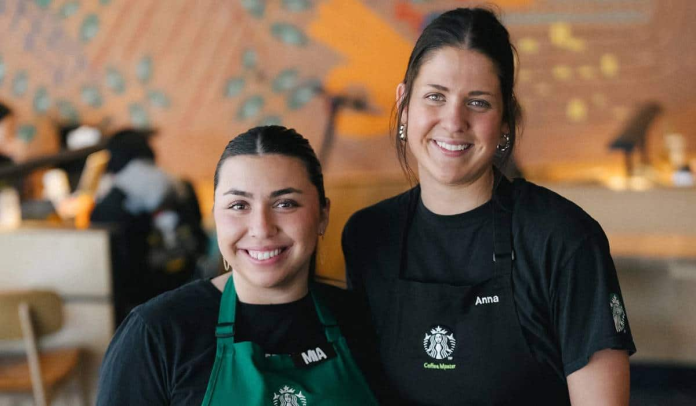Starbucks CEO Brian Niccol dramatically accelerated the rollout of the chain’s new staffing model, targeting deployment across all 18,000 North American stores by summer’s end, Reuters reported.
The Green Apron initiative, central to Niccol’s Back to Starbucks turnaround strategy, will prioritise in-store experience over digital orders via dedicated drive-through baristas and AI-driven order sequencing technology. Early tests in 700 pilot stores reportedly improved service speed and sales, though Niccol withheld specifics.
The shift marks a strategic pivot from previous leadership’s automation focus. Niccol explicitly acknowledged that removing labour alongside deploying equipment had backfired.
Over the last couple of years, we’ve been removing labour from the stores, I think with the hope that equipment could offset the removal of the labour. What we’re finding is that wasn’t an accurate assumption with what played out.
Instead, Green Apron reinvests in human capital, a tacit reversal of the stalled Siren System automation programme now limited to high-volume drive-through locations. Niccol emphasised speed as critical, targeting order completion in four minutes or less, a benchmark already met in half of transactions.
Getting the core café experience right will drive everything we do and everything we make.
However, the accelerated rollout faces headwinds. TD Cowen recently downgraded Starbucks to “hold,” citing concerns that Niccol’s turnaround would “take longer than expected.” Shares gained just 11% over five years versus the S&P 500’s 88% surge, reflecting persistent challenges: North American traffic plummeted 10% in late 2024, with same-store sales declining for four consecutive quarters.
Niccol conceded the overhaul requires painful trade-offs. While investing heavily in labour and store upgrades, he vowed to be “ruthless” in cutting costs unrelated to the core strategy. This includes suspending financial guidance until 2026 and deprioritising earnings metrics, a move underscoring the long-term gamble.
